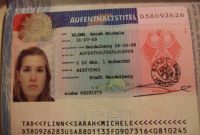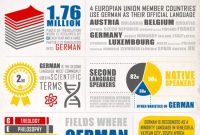Germany is a famously diverse and international country, and German student identity has been significantly shaped by this. With many cultural influences from far and wide, the country boasts remarkable vibrancy and variety. Here we explore German student identity and diversity and how it manifests in the everyday lives of students.
The composition of the student body reflects the different cultures and backgrounds that make Germany a diverse and enriching place. From the refugees and migrants who come to study there, to the international students that cross borders to pursue their studies, the diversity of students is integral to German student identity. This unique mix of peoples and ideas is integral to German society and has allowed Germany to become a world leader in arts, sciences and culture.
Introduction to German Student Identity
German student identity is an ever-evolving concept that is largely shaped by the country’s past and present. Germany is a very multicultural country, with a rich and diverse history that has shaped its culture and people. It is also a part of the European Union and has been home to many different political powers over the centuries. Within this context, German student identities have been shaped by various aspects, including but not limited to, language, religion, race, gender, class, and national identity.
Although there is a general trend among German students toward a cosmopolitan perspective, student identities vary widely depending on individual experiences. This diversity also extends to generational distinctions, as a variety of opinions and experiences exist among different age groups. The current generation of students, in particular, is considered to be more outward looking and open-minded compared to previous generations.
In this article, we will explore German student identity and diversity. We will look at the various aspects that shape German student identity, such as language, religion, race, and gender. We will also examine how different generations of students perceive their identities and how national identity might influence student identity. Finally, we will discuss the implications that this diversity has for German students today.
Exploring the Diversity of German Students

Germany is home to a diverse population of students and young people, each with their own unique perspectives and experiences. Although the majority of German students do originate from within the country, German higher education institutions are increasingly attracting students from abroad, including a growing number of international exchange students. This creates a vibrant environment in which students from different cultures can learn from one another and share their unique perspectives.
In order to fully understand and appreciate the diversity of German students, it is important to explore the various aspects of German student identity and diversity. In particular, German student identity may be subdivided into a number of different categories, including but not limited to language, ethnicity, religion, gender, and sexuality. Each of these categories can provide insight into how German students identify themselves and form an important part of the overall student identity. Additionally, exploring the diversity of German students can provide a valuable window into the study of cultural diversity in Europe.
The following section provides an in-depth exploration of the diversity of German students. Particular emphasis is placed on language, ethnicity, religion, gender, and sexuality, as these categories provide the most comprehensive scope of what it means to be a German student.
Language
The most widely spoken language among German students is German, with the majority of students also speaking the language natively. However, many students also speak or understand one or more additional languages, including English, French, Spanish, and other regional languages. Additionally, many German universities also offer the opportunity to learn other languages as part of their academic programmes.
Ethnicity
The majority of German students are of German ethnicity, but increasingly, students of non-German background are deciding to study at German universities. In particular, many students from Europe, North America, and Asia are now choosing to pursue higher education in Germany. This has led to a new wave of cultural diversity in German universities.
Religion
Religion is a major factor in terms of defining student identity in Germany. While the vast majority of students profess to being Protestant or Catholic, there is also a significant number of Muslims and adherents of other belief systems studying at German universities. Additionally, there is a growing trend towards students having no religious affiliation, with many relating to atheism or agnosticism.
Gender & Sexuality
Gender and sexuality are increasingly becoming areas of interest and discussion for German students. Many German universities now have clubs or societies devoted to advocating for gender and sexual equality and creating a space for students of all gender identities and sexual orientations to make their voices heard. This is helping to create a more inclusive and accepting environment for all students.
In conclusion, German students represent a diverse range of identities, backgrounds, and beliefs. By exploring the various aspects of German student identity and diversity, we can gain a greater understanding of the dynamics and nuances of German student life and culture.
Conclusion
In conclusion, Germany has long since been home to a variety of student identities and communities. This diversity is not only essential for promoting tolerance and inclusivity in the country, but it also serves to enrich the culture and experience of both students and German citizens. This article has explored the various aspects and nuances of German student identity, providing readers with an understanding of the diversity of Germany’s student population.
Ultimately, as this article has highlighted, there is no one-size-fits-all definition of German student identity. Rather, German student identity is incredibly varied and comprises a multitude of intersecting influences. German students are foremost citizens of Germany, and in order to protect and strengthen the vibrant and diverse German student population, it is essential to foster an environment of mutual respect and appreciation.




